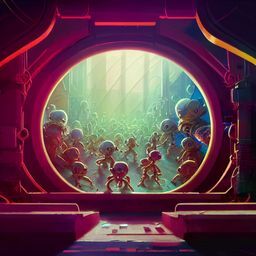
Stable Horde
Harness AI for efficient, community-driven image and text generation.

About
Stable Horde provides a collaborative platform for generating digital content using advanced artificial intelligence. Users tap into a distributed network of volunteer computing resources to produce images and texts quickly and efficiently. The system is designed to be accessible from various devices and is equipped with transparent performance metrics to keep users informed about reliability and speed.
The service offers features like real-time tracking of request processing, webhooks for automated workflows, batching to handle larger loads, and plugins for integrating with existing tools. Both technical and non-technical users are served, although more advanced setup options may be daunting for complete beginners. The underlying infrastructure is supported by a diverse global community, fostering continuous improvements through open contributions.
Flexible for both individual projects and integration into larger systems, Stable Horde stands out for its scalability and cross-platform support. Documentation and SDKs make it approachable for developers looking to embed AI-driven content creation into their applications. At the same time, educators, researchers, and creative professionals benefit from the ability to generate unique assets without investing in dedicated hardware or expensive software licenses.
Who is Stable Horde made for?
Stable Horde is best suited for software developers, digital artists, content writers, and educators aiming to incorporate AI-generated images or text into their projects or workflows. Indie game developers and small creative studios use it to rapidly generate concept art, narrative prompts, or visual assets without specialized hardware or large budgets.
Content creators in need of unique graphics or textual content for blogs, videos, or social media campaigns also find Stable Horde valuable. Researchers and educators leverage it to explore AI capabilities, support classroom demonstration, or jump-start research in artificial intelligence and creative computing.
Its open, community-driven model makes it a practical fit for freelancers or hobbyists pursuing personal creative projects who prefer free, scalable tools that don't lock them into proprietary platforms.